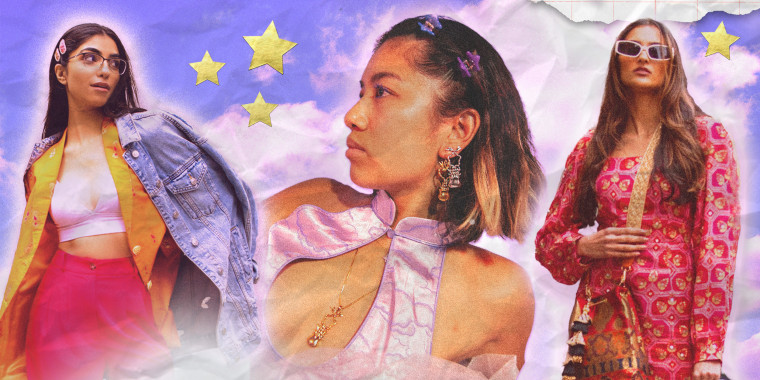A traditional business suit might be transformed into a bold power suit, made from upcycled sari fabric and embellished with traditional prints like paisleys. The going-out top gets a revamp with a Mandarin collar and a miniskirt to match.
The diaspora is increasingly searching for uniquely Asian American fashion, and Asian-owned brands are responding by increasingly highlighting their blended identity with trendy and culturally inspired clothing collections. They're using fabrics, cuts and accessories to meet the communities' needs.
And the demand has been evident: For example, HoliCHIC, an Indian American clothing company based in New York City, has had a 310% increase in sales since 2021, according to the brand. Dawang, a Chinese American streetwear company based in New York, has doubled its sales every year since its inception in 2019, the company told NBC News.
Megha Rao, the founder and designer of HoliCHIC, said she has a following of young South Asian professionals looking for Indo-Western clothes to wear at work and events and when they go out.
Rao, 40, said that from sari-inspired formal gowns to jewel-toned blazers embroidered with traditional Indian designs, HoliCHIC set out to make pieces that were subtle but unmistakably South Asian.

HoliCHIC also sells traditional Indian clothes, but its Indo-Western collections, which include pieces like pencil dresses and crop tops made from silk fabric, generally used to make saris or lenghas — two-piece Indian formal outfits that include floor-length skirts and cropped shirts — are its most popular pieces.
“It’s really about [using] South Asian textiles — the embroidery and the traditional fabrics that we’ve all come to love and appreciate,” she said. “Normally, you’ll find it in a sari or a lengha. But as a designer, I’m constantly trying to think of unique ways to play with cuts.”
Indian textiles have historically been known for their vibrant dyes, distinct weaving, intricate embroidery and stamped prints. Rao used those textiles, typically made into Indian clothes, to create some of her most popular items.
“It’s like a new, fresh take on all of these beautiful fabrics that our moms used to wear,” she said.
Rao said her mom and her upbringing inspired her to make products like a blue silk sari cocktail dress and a lime green silk tracksuit, colors inspired by women’s Indian formal wear.
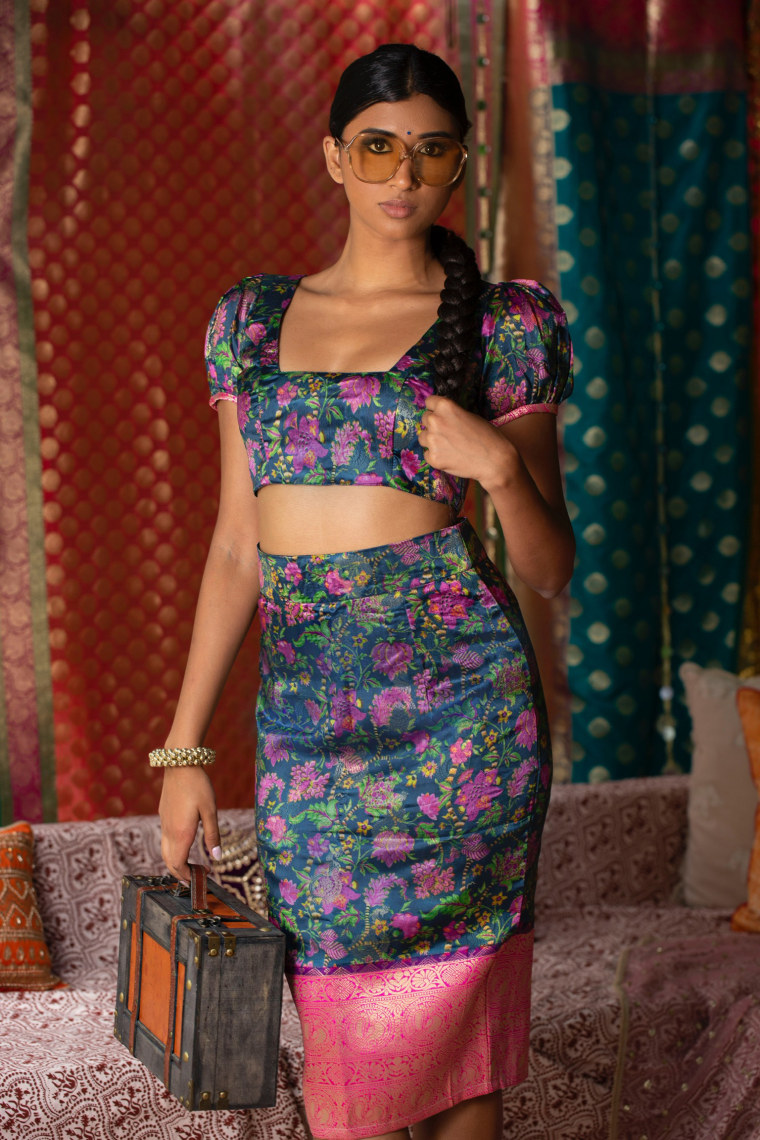
“I think that’s where the uniqueness of the designs comes from. Yes, I’m South Asian, but I’m also American, and I’m also from New York, the fashion capital of the world,” she said.
She believes her success is partly due to the shift in perspective for Asian Americans, including her own, with a newfound respect and interest in their own cultures.
“I have this sense of pride and responsibility to show people what my beautiful culture is all about, and there’s interest in it at the same time, which may not have been there before,” she said.
Other designers have also found inspiration for their brands through their Asian heritage.
Daisy Wang, the founder and designer of Dawang, said she wanted to find a balance between Western and Eastern influences for her collections.
The clothes run from dresses and crop tops to sweatshirts and track pants. The collections include details like knot button closures and qipao collars, also known as a Mandarin collar, a short stand-up collar that originated in Imperial China.
“One of the main things we’ve been continuing to use per season is brocade textile,” she said, adding that Dawang has been trying to “figure out … how we can incorporate this traditional textile into our modern designs.”
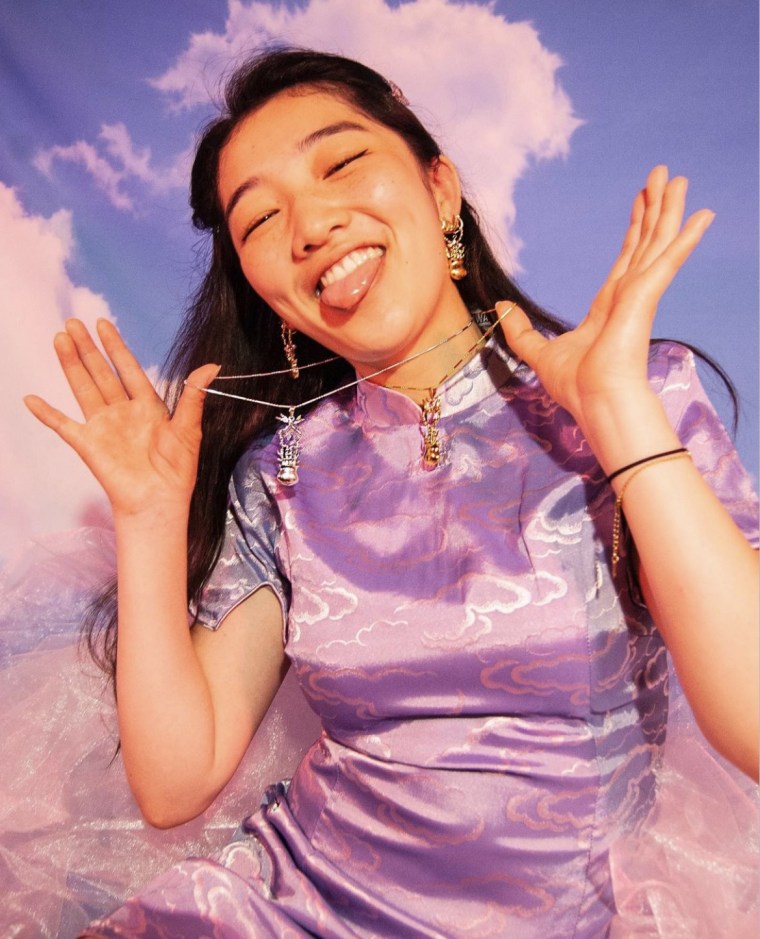
Brocade silk is woven to give the illusion of raised embroidery. The production of brocade began in ancient China and the designs in the silk quickly became more intricate during the Renaissance. The fabric is still a staple in traditional Asian fashion.
Dawang’s pieces feature designs like clouds and traditional Chinese patterns.
Wang explained how fashion in the country evolved over the last 5,000 years, including the influence of Western culture during the first part of the 20th century. The influence of Western culture resulted in a more form-fitting qipao dress but preserved the iconic collar.
“As a younger generation, we’re living in this world where everything is mixed. Why can’t we create another interpretation based on our modern understanding, our modern styles? So that gave me inspiration,” she said.
Wang, 28, believes the rapid growth of Asians in the U.S. and the search for unique fashion by the Asian diaspora most likely plays a role in her company’s success.
Influencers like Milan Mathew have also taken the opportunity to show off their cultures through fashion and accessories.
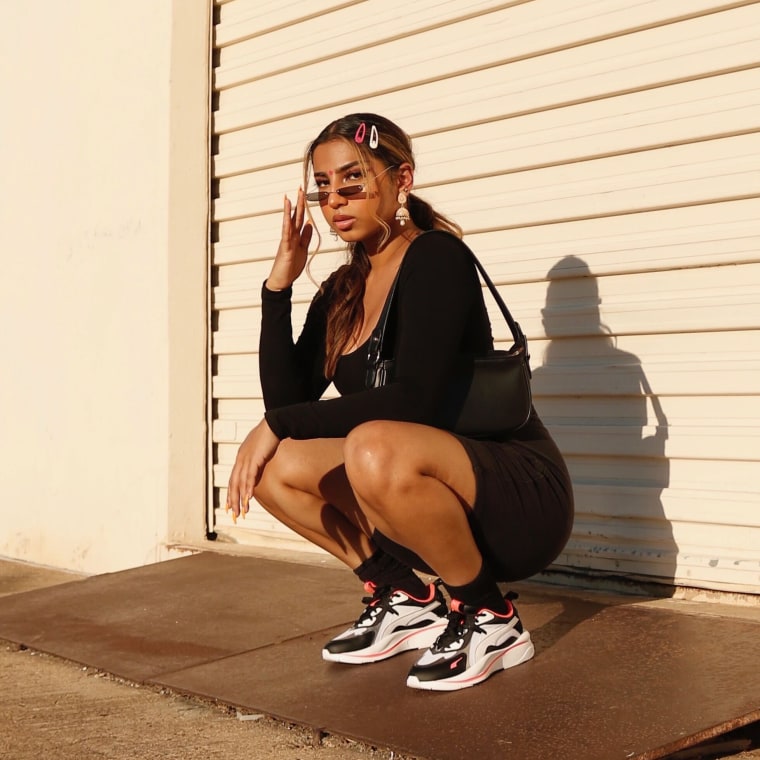
Mathew, a South Asian American who has 1 million followers on TikTok, is known for her fashion and lifestyle videos. She includes traditional Indian jewelry with her Western fashion, like wearing jhumkas, a traditional bell-shaped Indian earring, with a white slip dress. She also wears tikkas, an ornate headpiece that lays in the middle part of the hair and on the forehead. She styles the same type of earrings and a gold nose ring with blue jeans and a puffer jacket.
“I love the jhumkas and our tikkas. But when I see it, it’s mostly worn to Indian functions like weddings or parties,” she said. “But why can’t I just wear it normally? Most of the time I wear my jhumkas with my streetwear clothes or an Indian-style nose ring. It adds that little touch to your outfits, and there’s, like, a lot of meaning behind it.”
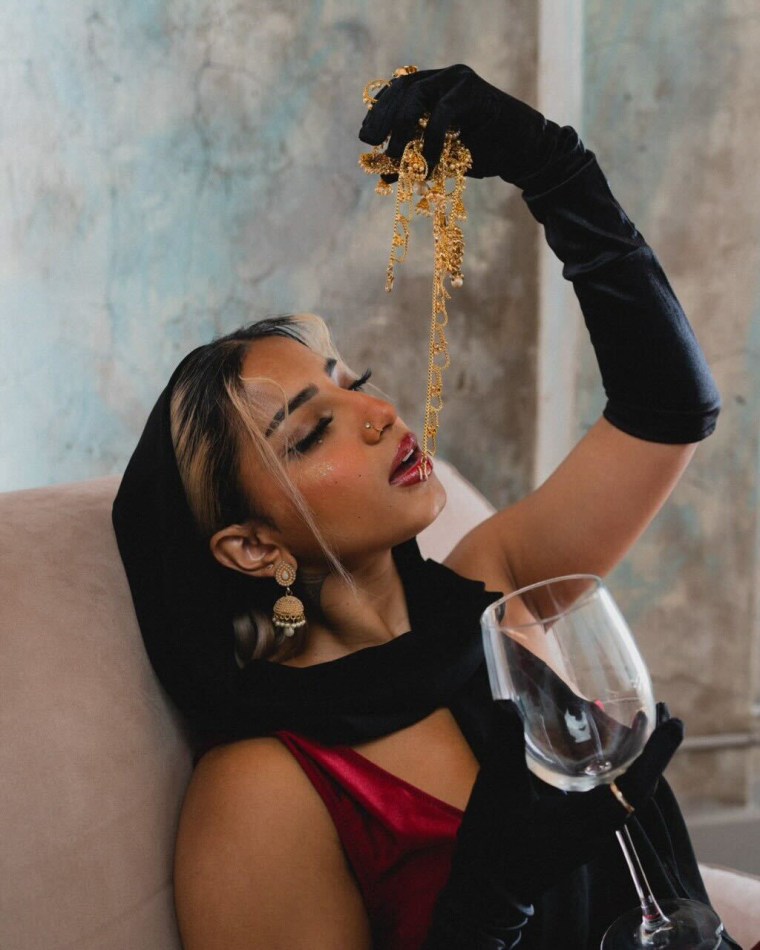
Mathew grew up in India and now lives in Houston. She found success on TikTok during the pandemic when she started making videos about Indian fashion. One of her most popular videos, which has 16 million views, shows her doing a TikTok trend where she transitioned from streetwear to a lengha and traditional jewelry.
Since then, she has become a full-time lifestyle content creator making videos about fashion, makeup and hair. She still makes videos styling saris and lenghas with ornate Indian jewelry, but she found subtle ways to incorporate that style in other videos. Her jhumkas and Indian-style nose rings are often featured in her videos and on her Instagram account.
Mathew, 25, said adding Indian-style jewelry like bangles and earrings to her outfits has made her feel prettier than simple Western jewelry does.
“It’s not too extravagant to where it’s taking away from the outfit. It’s adding to it. When I wear my nose ring, I feel really pretty. When you wear the jhumkas, you just, like, feel extra pretty,” she said.
CORRECTION (May 8, 2023, 10:00 a.m. ET): A previous version of this article misstated Megha Rao’s age. She is 40, not 44.
